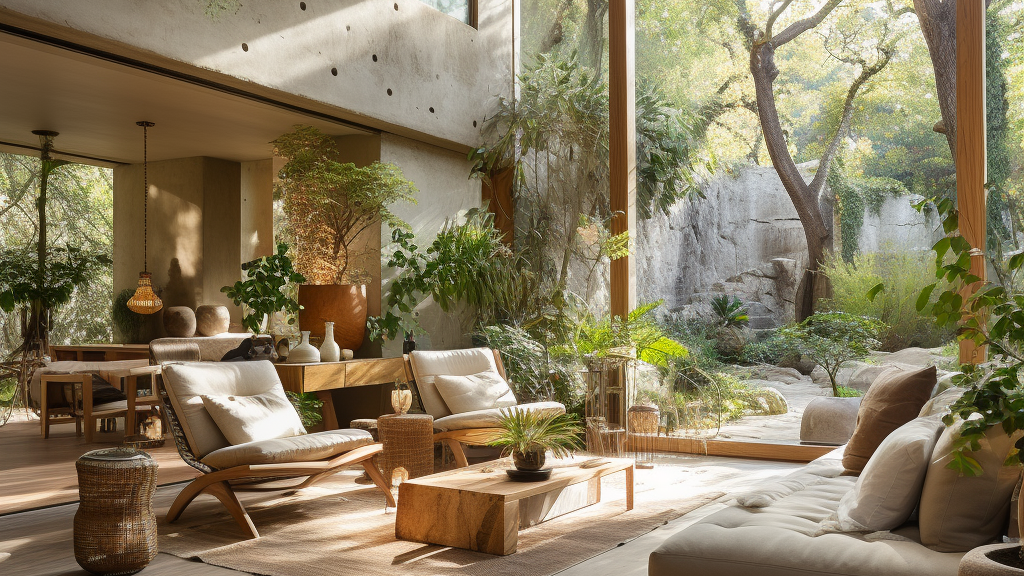Design by Atelier Essex Inc.
SUSTAINABLE HOME RENOVATION TIPS:
1. Sustainability Experts:
When embarking on your home renovation journey, it's essential to assemble a team of experts who are not only committed to sustainability but also well-versed in cutting-edge approaches like Passive House design.
Passive House experts are at the forefront of sustainable construction, focusing on creating energy-efficient homes that require minimal heating and cooling. By incorporating Passive House principles, your renovation can achieve exceptional levels of energy efficiency, resulting in lower utility bills and a reduced carbon footprint. Collaborating with these experts ensures that your home's design maximizes natural resources, from sunlight to insulation, and provides an unparalleled level of comfort and environmental responsibility.
One way to ensure this is by hiring LEED-accredited professionals. LEED stands for Leadership in Energy and Environmental Design and is managed by the U.S. Green Building Council (USGBC). Architects, interior designers, and general contractors can obtain LEED accreditation, demonstrating their commitment to sustainable building practices. Working with such professionals will help you make informed, eco-conscious choices throughout your renovation.
2. The Triple R: Reduce, Reuse, Recycle:
The "reduce, reuse, and recycle" mantra applies specially to renovations. When renovating your home, consider preserving and rehabilitating existing elements, such as exposed brick or millwork, to add character to your space. Refinishing old hardwood floors or painting them can transform your space sustainably. Challenge yourself to source repurposed materials before buying new items. Repaint, reposition, and repurpose existing decor and furnishings to give them a fresh look. Embrace a mindset of minimizing waste and maximizing what you already have.
2. Sustainable Materials:
Selecting the right materials is crucial in sustainable design. Look for naturally regenerative materials like bamboo and cork for flooring and finishes. Hemp, straw, and wood are excellent choices for building and interior design, as they promote better indoor air quality and eliminate toxic chemicals found in synthetic products. Opt for low or no VOC (volatile organic compound) paint to improve indoor air quality, and consider natural clay plaster wall finishes as a sustainable alternative. When choosing textiles, prioritize natural materials like hemp or linen, both of which are sustainable and eco-friendly.
3. Locally Sourced:
Supporting local businesses and artisans with a commitment to sustainability is an excellent way to enhance your renovation project. Look for businesses that repurpose locally sourced materials and reduce waste. Small woodworking companies, like Alabama Sawyer in Birmingham, turn fallen urban trees into functional and stylish pieces. Additionally, consider exploring consignment marketplaces for pre-owned luxury furnishings that align with your sustainable values. You can also use online directories to find women- and minority-owned businesses in your community to support inclusive and sustainable entrepreneurship.
4. Energy-Efficient Appliances:
In your quest for sustainability, consider upgrading your appliances. Start in the bathroom by installing low-flow faucets and low-flush toilets to reduce water consumption. When it comes to large appliances, prioritize those with high energy efficiency ratings. Additionally, consider switching from a gas stove to an induction model, which is not only energy-efficient but also reduces reliance on fossil fuels. Heat pumps can efficiently cool your home and heat water, contributing to a lower carbon footprint. Keep in mind that there may be tax incentives available for making climate-friendly changes like installing solar panels and opting for energy-efficient electrical appliances.
5. Biophilic Design
Creating a connection between your indoor space and the natural world not only benefits the environment but also enhances your well-being. Houseplants, living walls, and strategically placed mirrors to maximize natural light can help reduce energy consumption and create a sense of biophilia. Biophilic design focuses on incorporating elements of nature into your home, promoting a healthier and happier lifestyle. Embrace the idea of merging your interior space with the outdoors, whether through greenery, natural light, or eco-friendly design elements.
Conclusion
Incorporating sustainability into your home renovation can make a significant difference, not only in the look and feel of your space but also in the overall well-being of your family and the planet. By hiring accredited professionals, choosing eco-friendly materials, reducing waste, and supporting local businesses, you can create a sustainable and beautiful home that aligns with your values. Furthermore, by bringing nature into your living space, you can foster a deeper connection with the environment while enhancing the quality of your daily life. So, whether you're embarking on a small project or a full-scale renovation, let sustainability guide your choices, and you'll be contributing to a greener future for all.
November 13, 2023
Written By Pebel Rodriguez, AIA, Licensed Architect, Principal at Atelier Essex.
Chair of the American Institute of Architects (AIA) Silicon Valley Committee on the Environment (COTE)
LEED Accredited Professional | Passive House Designer
M.Sc. Environmental Systems Management



